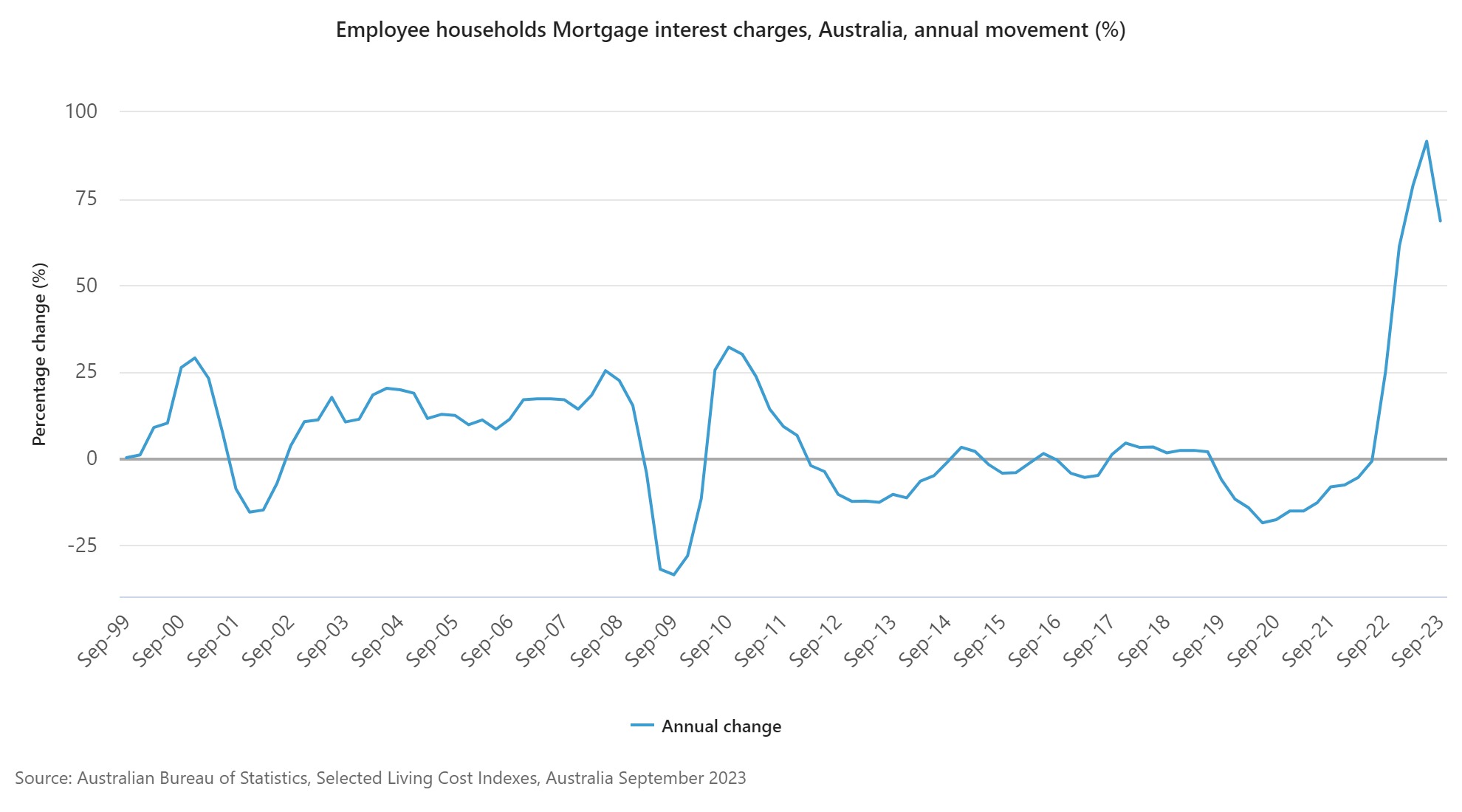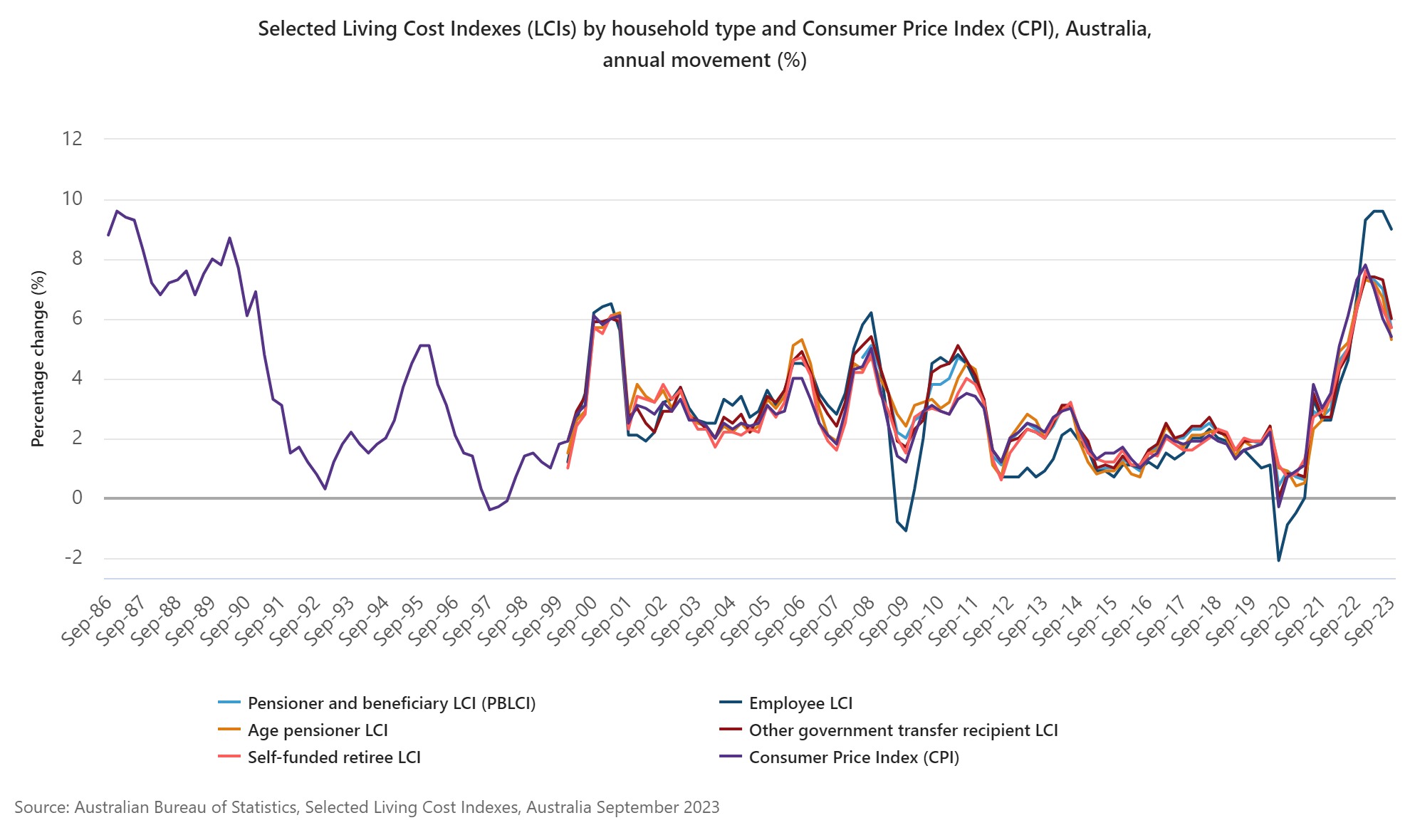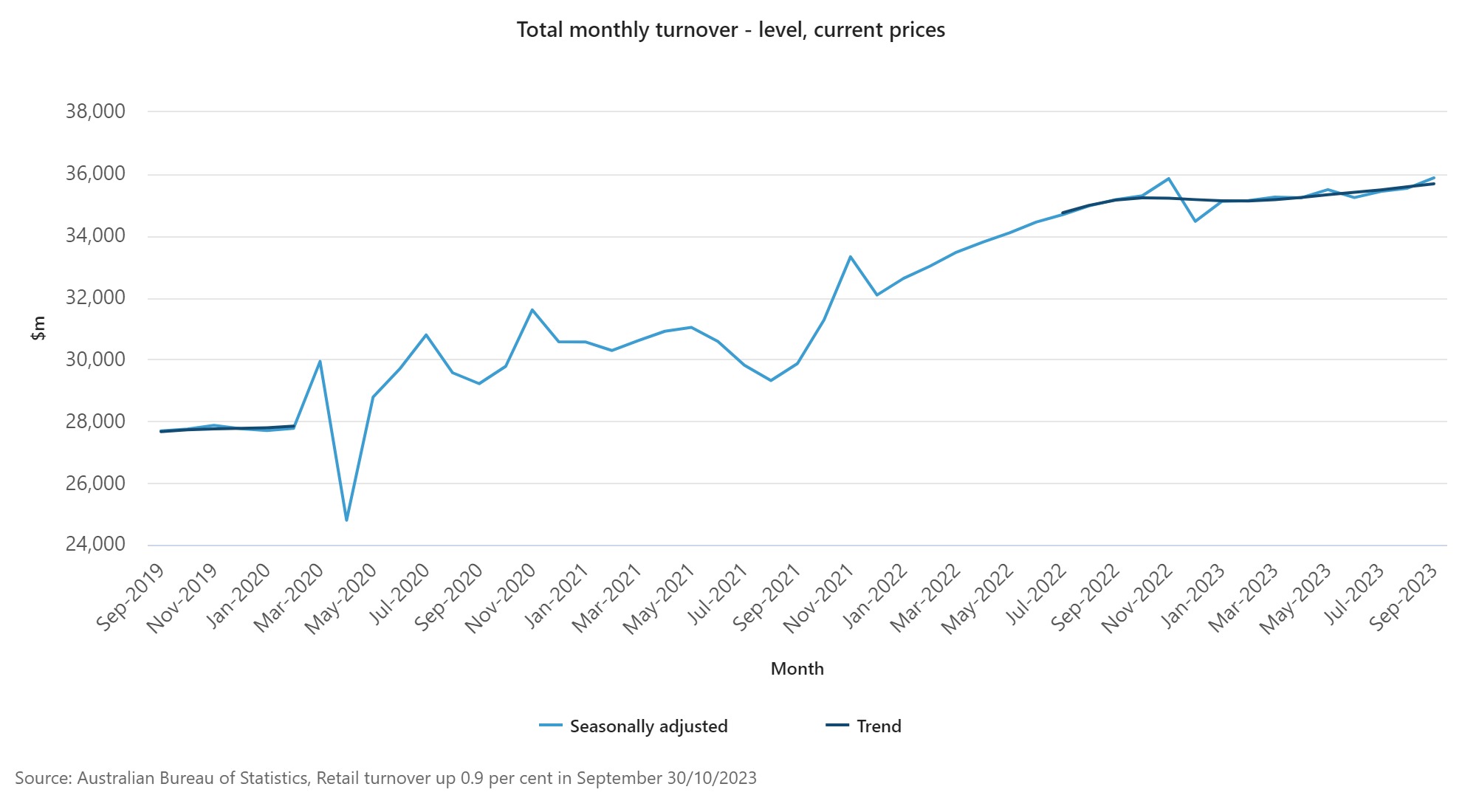

Living costs for employees have recorded the largest increase out of all household types with a rate almost twice that of inflation, according to Australian Bureau of Statistics (ABS).
This was fuelled by rising mortgage interest charges, which are a larger part of their spending than for other household types.
For all households, mortgage interest charges rose 9.3% following a 9.8% rise in the June 2023 quarter, said Michelle Marquardt (pictured above left), ABS head of prices statistics. For the year to September, it rose 68.6% easing from a peak of 91.66% last quarter.
“While the Reserve Bank of Australia has not increased the cash rate since July 2023, previous interest rate increases and the rollover of some expired fixed-rate to higher-rate variable mortgages resulted in another strong rise this quarter,” Marquardt said.

A significant difference between the Living Cost Indexes (LCI) and the Consumer Price Index (CPI) is that the LCI include mortgage interest charges into its figure.
Employee households were most impacted by rising mortgage interest charges, which are a larger part of their spending than for other household types.
This saw employee households recorded the largest annual rise in living costs of all household types, rising 9.0% over the year, down from a peak of 9.6% in the June 2023 quarter.
The remaining four household types (age pensioner, other government transfer recipient, and pensioner and beneficiary households) recorded rises between 5.3% and 6.0%.

Over the September quarter, Marquardt said increases in living costs ranged from 0.5% to 2.0% depending on the expenditure patterns of the different household types.
“Employee households recorded the largest increase in living costs of all household types with a rate almost twice that of the Consumer Price Index (CPI), which rose 1.2%,” Marquardt said.
“Higher global oil prices for automotive fuel and increased insurance premiums across house, home contents and motor vehicles contributed to greater living costs for all household types.”
Increasing interest rates over the year have contributed to annual living cost rises ranging from 5.3% to 9.0% for different household types. Most households recorded higher rises than the 5.4% annual increase in the CPI.
Higher automotive fuel prices and insurance premiums also contributed to increases in annual living costs for all household types.
After employee households, other government transfer recipients recorded the next largest annual rise in living costs through to September 2023.
“Rents make up a higher proportion of spending for these households compared to other household types. Rental prices have increased over the last year reflecting strong demand and low vacancy rates across the country,” Marquardt said.
Living costs for each of the three indexes for households whose main source of income is government payments (age pensioner, other government transfer recipient, and pensioner and beneficiary households) increased more slowly than the CPI in September quarter.
Marquardt said the primary reason for this was a fall in their Housing costs for the quarter following the introduction of the Energy Bill Relief Fund rebates and changes to Commonwealth Rent Assistance.
The Energy Bill Relief Fund reduced electricity bills for all households in Brisbane and Perth, and for households eligible for electricity concessions in the remaining capital cities.
From 20 September 2023, the maximum rate available for Commonwealth Rent Assistance increased by 15% on top of the CPI indexation that applies twice a year, reducing out of pocket expenses for eligible households.
Given the timing of these changes, the September quarter results show only a partial impact of the Commonwealth Rent Assistance changes with further impacts to come through in the December 2023 quarter.
Despite living costs increasing, Australian retail turnover rose 0.9% in September 2023, according to seasonally adjusted figures released on Monday by the ABS.
This follows rises of 0.3% in August 2023 and 0.6% in July 2023.
Ben Dorber (pictured above right), ABS head of retail statistics, said the strong rise in September came from a diverse range of factors across the retail industry.
“The warmer-than-usual start to spring lifted turnover at departments stores, household goods and clothing retailers, with more spending on hardware, gardening, and clothing items,” Dorber said.
“Also adding a boost to turnover in household goods retailing was the release of a new iPhone model and the introduction of the Climate Smart Energy Savers Rebate program in Queensland.”

The latest Consumer Price Index showed that inflation rose again this quarter, however growth continued to be lower than that seen throughout 2022.
“To see the full effect of changing consumer prices on recent retail turnover growth, it will be important to look at quarterly retail sales volumes which we release next week,” Dorber said.
With the Reserve Bank board meeting next Tuesday, it remains to be seen if these figures indicate another rise in the cash rate.
What do you think the RBA’s verdict will be? Comment below.
